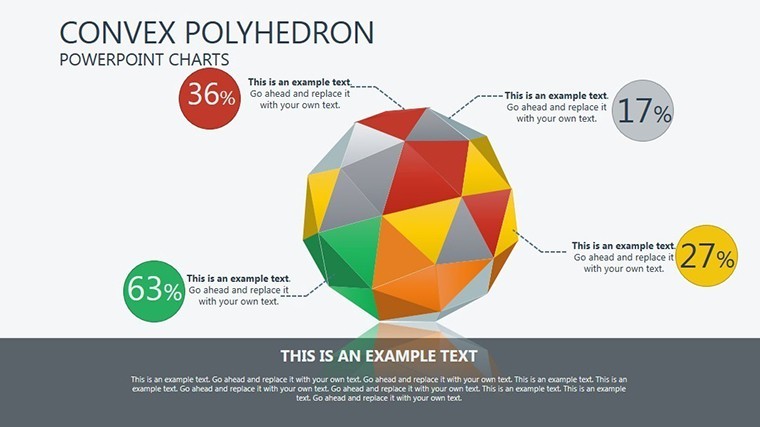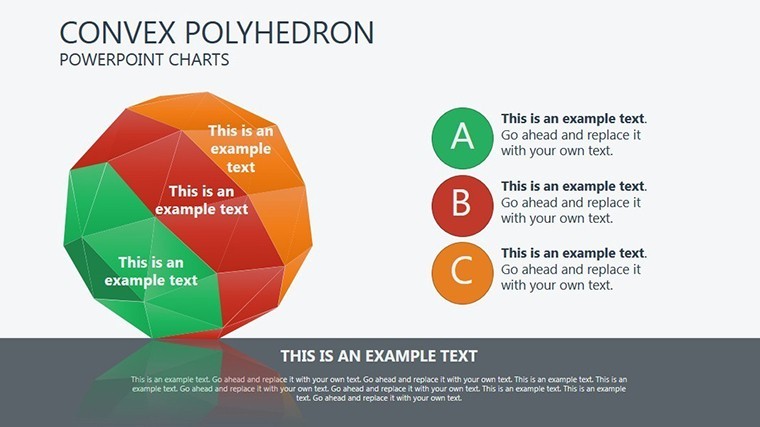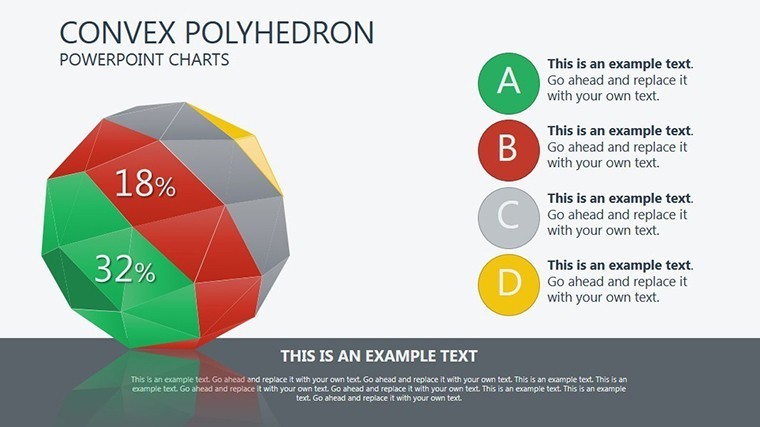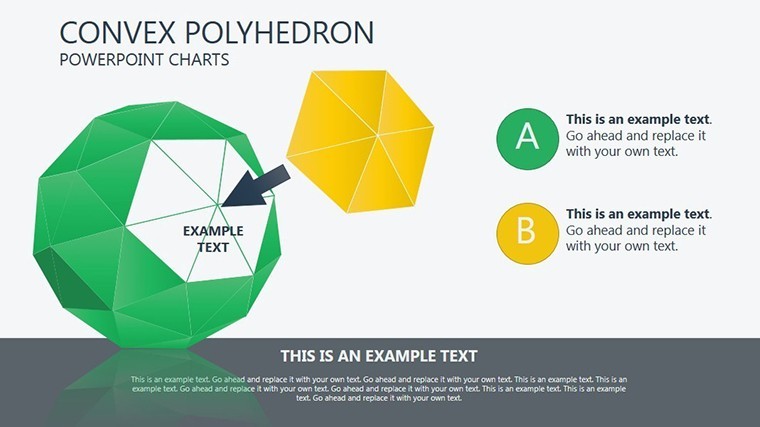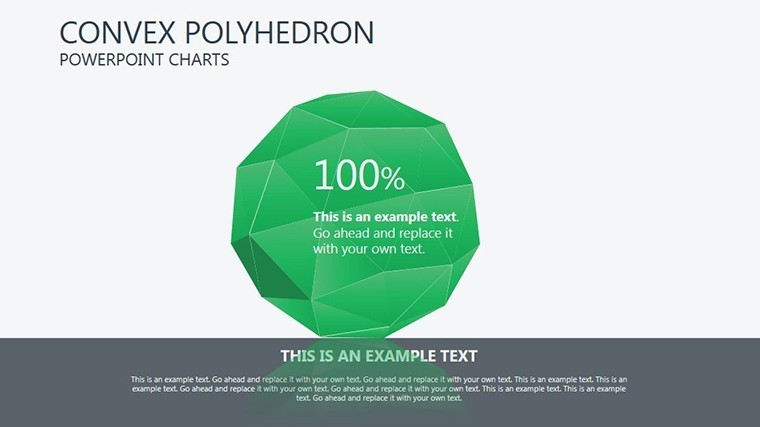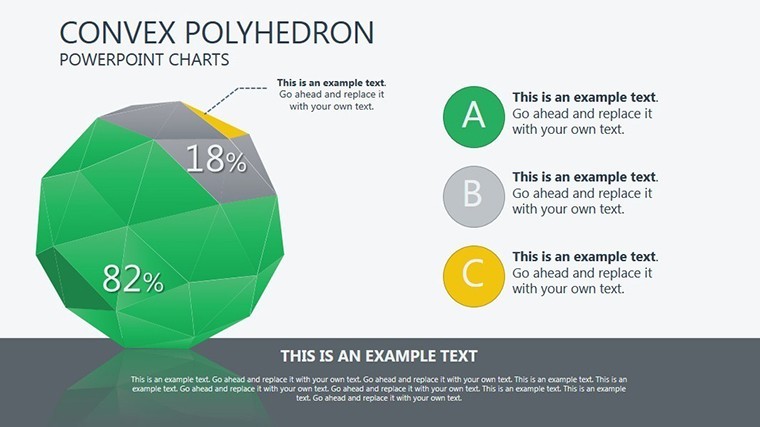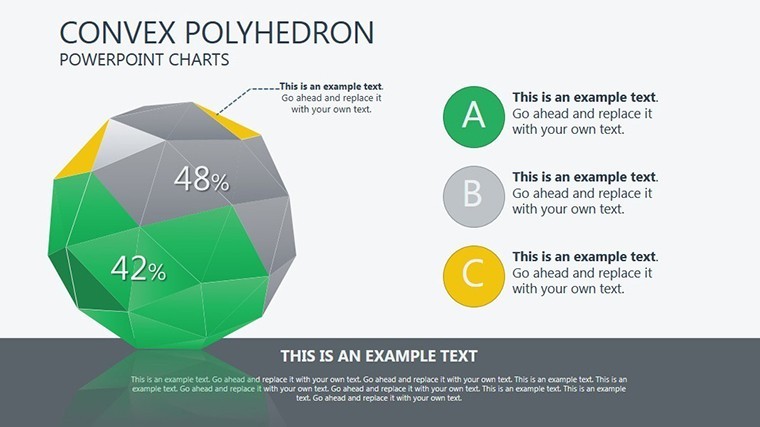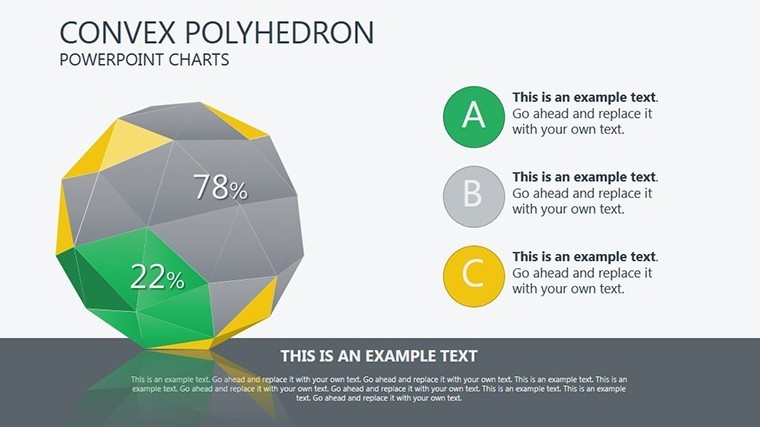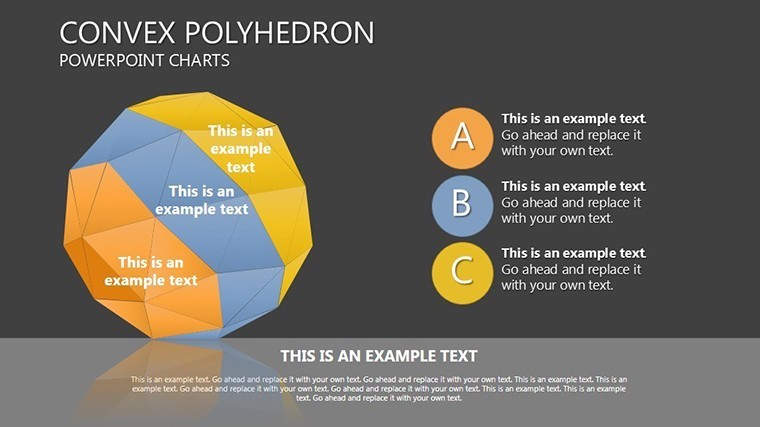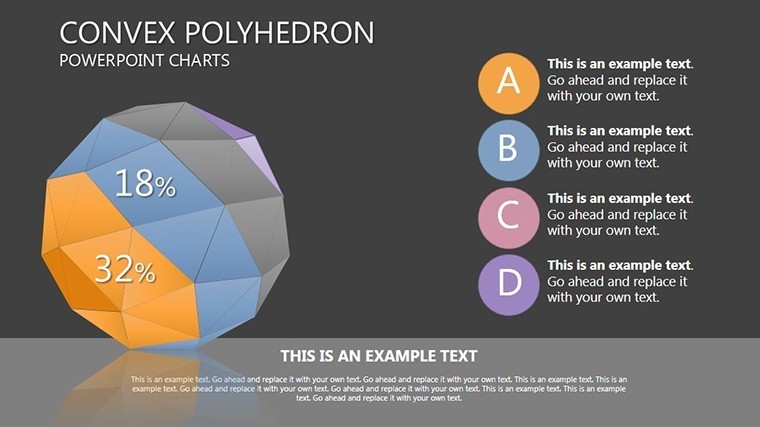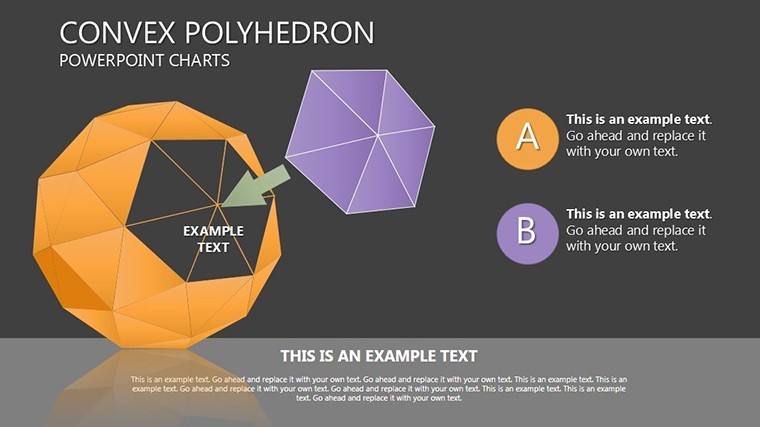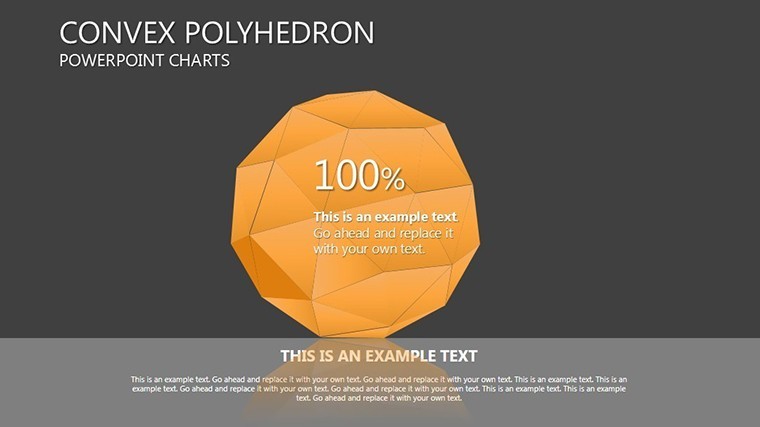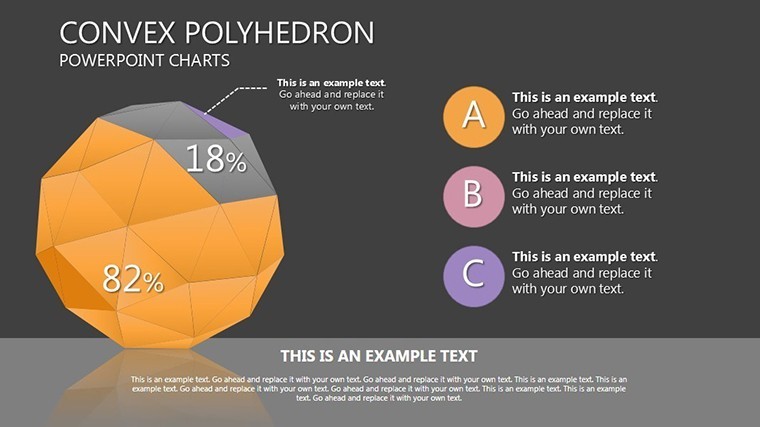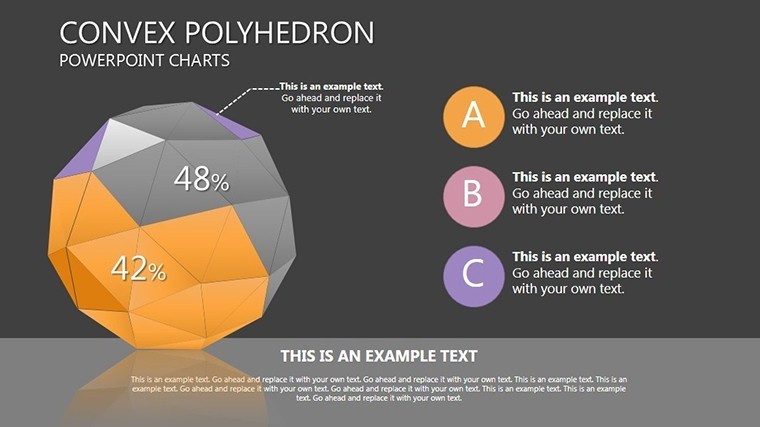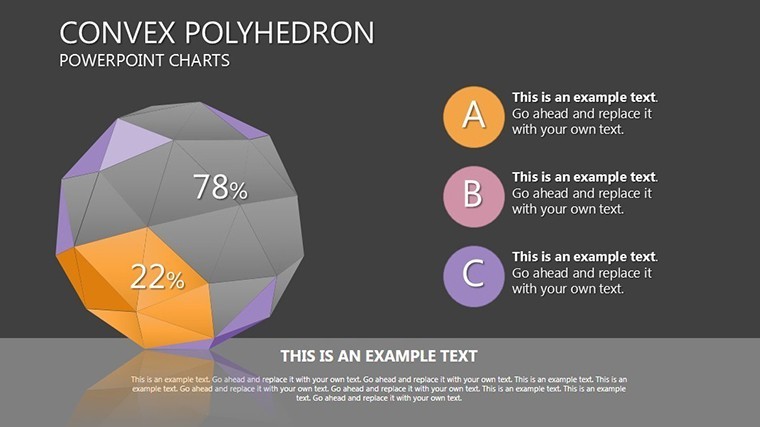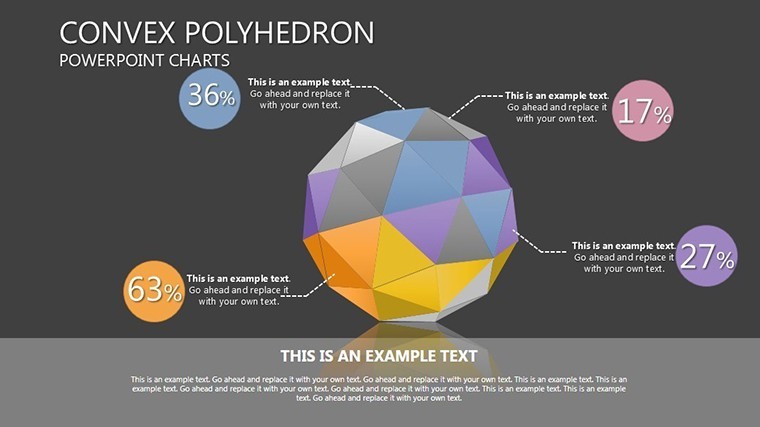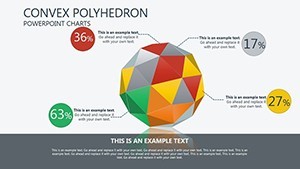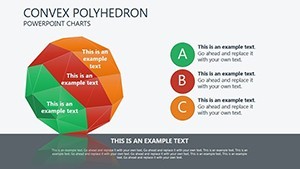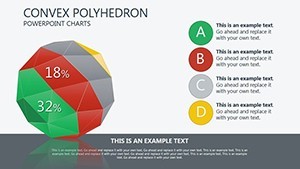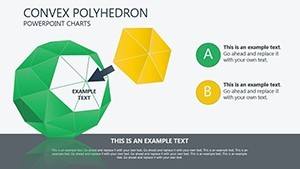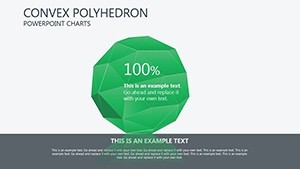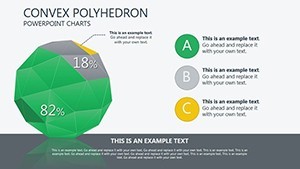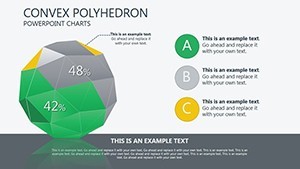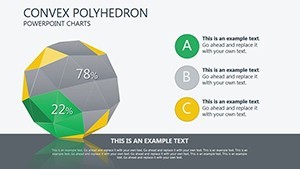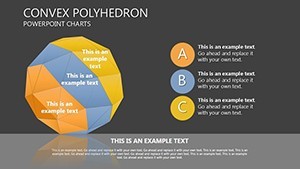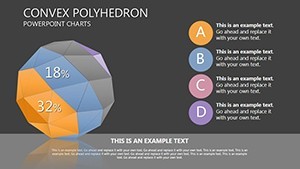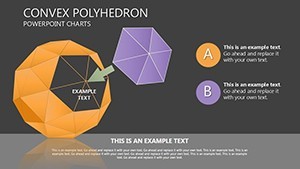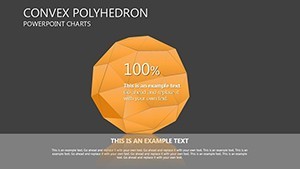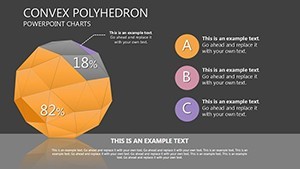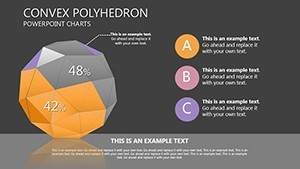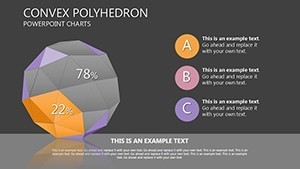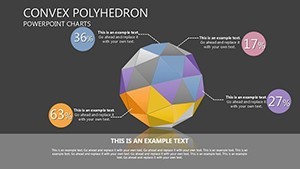Promo code "00LAYOUTS"
Convex Polyhedron 3D Keynote Charts: Sculpt Data in Three Dimensions
Type: Keynote Charts template
Category: 3D
Sources Available: .key
Product ID: KC00104
Template incl.: 16 editable slides
Step into the realm of spatial storytelling, where your presentation on a volumetric building analysis unfolds like a multifaceted gem - each face revealing a new angle on structural integrity or space utilization. Our Convex Polyhedron 3D Keynote Charts template embodies this precision, offering architects, engineers, and scientists a robust tool to present geometric data with depth and accuracy. With 16 editable slides, it's designed to navigate the complexities of 3D forms, making abstract polyhedrons tangible for audiences in boardrooms or lecture halls.
Rooted in Keynote for optimal performance, yet fully exportable to PowerPoint and Google Slides, this template demystifies convex polyhedrons - those finite polygons in space where faces adjoin seamlessly, mirroring real-world solids like prisms in architectural models. It's ideal for showcasing volume distributions in designs, from load-bearing calculations to 3D site mappings, ensuring your visuals are as trustworthy as they are striking.
Geometric Brilliance: Standout Features of the Polyhedron Template
Crafted with mathematical rigor, the template leverages Keynote's 3D capabilities to render polyhedrons that rotate and illuminate on demand, providing multi-perspective insights without external software.
- Authentic 3D Polyhedrons: Convex shapes with flat faces, editable for custom facets like dividing building volumes into functional zones.
- Spatial Customization: Adjust vertices, edges, and faces to fit data, such as polyhedron segments for material densities.
- Flat-to-Form Transitions: Start with 2D polygons and extrude to 3D, simplifying complex spatial presentations.
- Broad Compatibility: .key source files export to PowerPoint/Google Slides, retaining 3D essence.
- High-Fidelity Rendering: Shadow and light effects for realistic depth, enhancing professional credibility.
Backed by geometry experts' endorsements, this template has aided in visualizing polyhedral optimizations for AIA submissions, where 3D clarity accelerated peer reviews.
Unpacking the Polyhedrons: Slide Structure and Utility
Beginning with Slide 0: A basic convex polyhedron intro, setting the geometric foundation. Slides 1-5 explore simple forms like tetrahedrons for foundational data, applicable to truss analyses in bridges.
Mid-template (Slides 6-10) advances to compound polyhedrons, merging faces for volumetric breakdowns - think dissecting a pavilion's space into polyhedral compartments for airflow simulations. Final Slides 11-15 culminate in interactive models, with rotatable views for in-depth explorations like polyhedron-based cost modeling in multi-story designs.
Spatial Scenarios: Applications in Professional Arenas
Engineers use these for finite element visuals in stress testing; architects for polyhedral zoning in parametric designs. A notable example: A firm in Dubai employed polyhedron charts to illustrate dome geometries in a stadium project, their 3D facets clarifying acoustic distributions and winning international acclaim.
Workflow guide:
- Model Your Data: Input spatial metrics from CAD software.
- Construct Polyhedrons: Build faces from polygons, ensuring convexity for accurate representations.
- Layer Insights: Color faces by attributes, e.g., red for high-load areas.
- Enable Interactivity: Add rotations to reveal adjacencies during talks.
- Finalize Exports: Output for reports or collaborative platforms.
Superior to 2D alternatives, polyhedrons provide true spatial context, vital for fields demanding volumetric precision like urban modeling.
Precision Sculpting: Tips from Geometry Pros
Maintain convexity to avoid distortions - verify each face adjoins uniquely. Use minimal facets for clarity, expanding for detailed views. Integrate with 3D pie templates for hybrid analyses in comprehensive portfolios.
A researcher praised its role in crystallography lectures, where polyhedron visuals elevated abstract concepts to engaging solids. Secure the Convex Polyhedron 3D Keynote Charts template now and dimension your data with geometric mastery.
Frequently Asked Questions
Q: What defines a convex polyhedron in this template?A: Flat polygonal faces adjoining uniquely in space, forming solid bodies like prisms.
Q: Compatible with non-Keynote apps?A: Yes, exports to PowerPoint and Google Slides with 3D preserved where possible.
Q: How editable are the 3D elements?A: Completely - modify faces, colors, and orientations freely.
Q: Best for which use cases?A: Spatial data in architecture, engineering, and scientific presentations.
Q: Slide count?A: 16 editable slides for varied polyhedron explorations.
Q: Suitable for beginners?A: Yes, with intuitive tools building from simple polygons.

